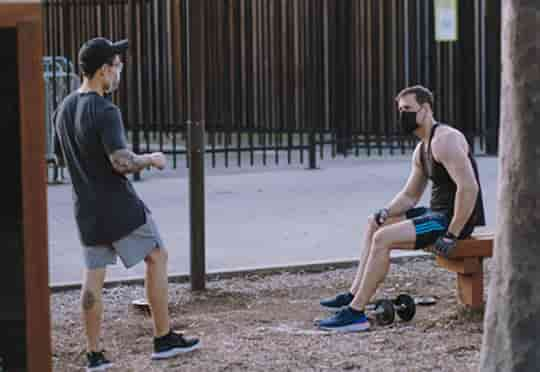Can social distancing work or there are better ways to lower COVID-19 spread?
Coronavirus can travel further than 10 meters in the air when infected people breathe out the droplets, cough, sneeze, or even just talk.
The virus droplet are very small and so they can spread further than the recent social distancing measurements.
Although this looks frightening, the virus has to overcome many obstacles in order to infect a person.
Viruses are known to travel by aerosol but in fact plenty of them are damaged in the air, therefore only a small percentage of viruses in exhaled breath remain infectious (Milton et al., 2013).
An experimental study by Doremalen et al. (2020) found that once the SARS-CoV-2 virus has left the body it remains active for 3 hours, while another study suggests 16 hours (Fears et al., 2020).
These studies were done in the lab and are not true reflections of human exhaled conditions and it is still the case that the virus declines in a short period of time.
The other factor is that the chance of inhaling airborne virus droplets is higher in crowded places or close contact less than 2 meters from an infected person.
A new petition signed by 239 scientists points out that the virus aerosols can travel further than the current social distancing rules, suggesting measures should be taken in preventing the airborne transmission of Covid-19.
Professor Lidia Morawska who led the signatories, said:
“Studies by the signatories and other scientists have demonstrated beyond any reasonable doubt that viruses are exhaled in microdroplets small enough to remain aloft in the air and pose a risk of exposure beyond 1 to 2m by an infected person.
At typical indoor air velocities, a 5-micron droplet will travel tens of meters, much greater than the scale of a typical room while settling from a height of 1.5m above the floor.”
Researchers suggest that the risk of Covid-19 airborne transmission is nearly 19 times higher indoors than in open-air places (Nishiura et al., 2020).
Many indoor places lack decent ventilation and the air becomes stagnant, increasing the infection risk.
The signatories highlight some practical measures as previously suggested by other studies including (Kumar & Morawska, 2020):
- Install ample and proper building ventilation to provide clean outdoor air and filter air, especially in hospitals, public buildings, care homes, workplace, and schools.
- Add airborne infection controls, like high efficiency air filtration, local exhaust, and germicidal ultraviolet lights.
- Overcrowding in public buildings and on public transport should be avoided.
The authors write:
“These are practical and can be easily implemented and many are not costly.
For example, simple steps such as opening both doors and windows can dramatically increase air flow rates in many buildings.
Numerous health authorities currently focus on hand-washing, maintaining social distancing, and droplet precautions.
Hand-washing and social distancing are appropriate, but it is view, insufficient to provide protection from virus-carrying respiratory microdroplets released into the air by infected people.”
“It is Time to Address Airborne Transmission of COVID-19” is published in the journal of Clinical Infectious Diseases (Morawska et al., 2020).

